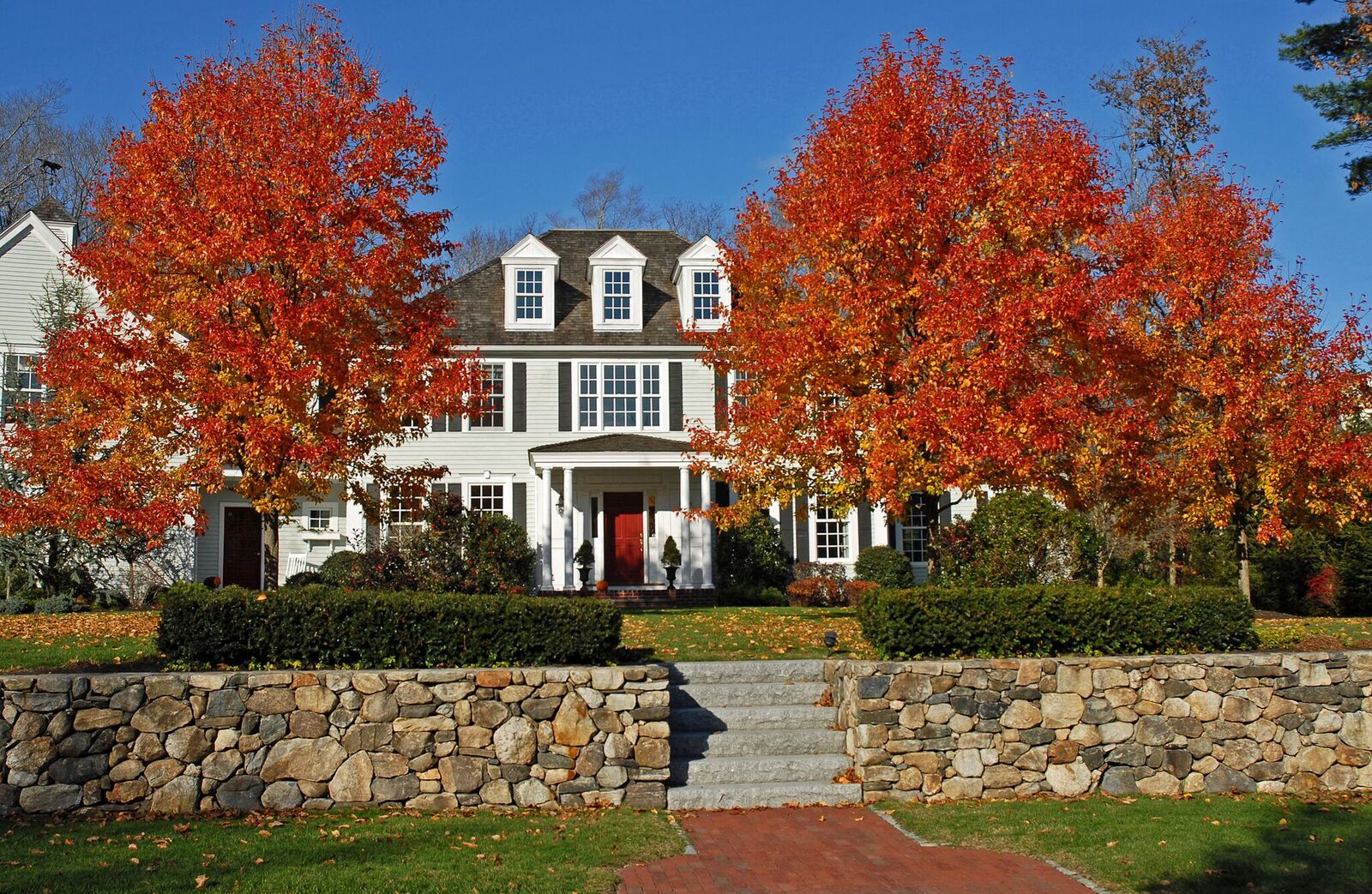8 Freestanding and Retaining Stone Wall Designs That Will Add Dimension to Your Property
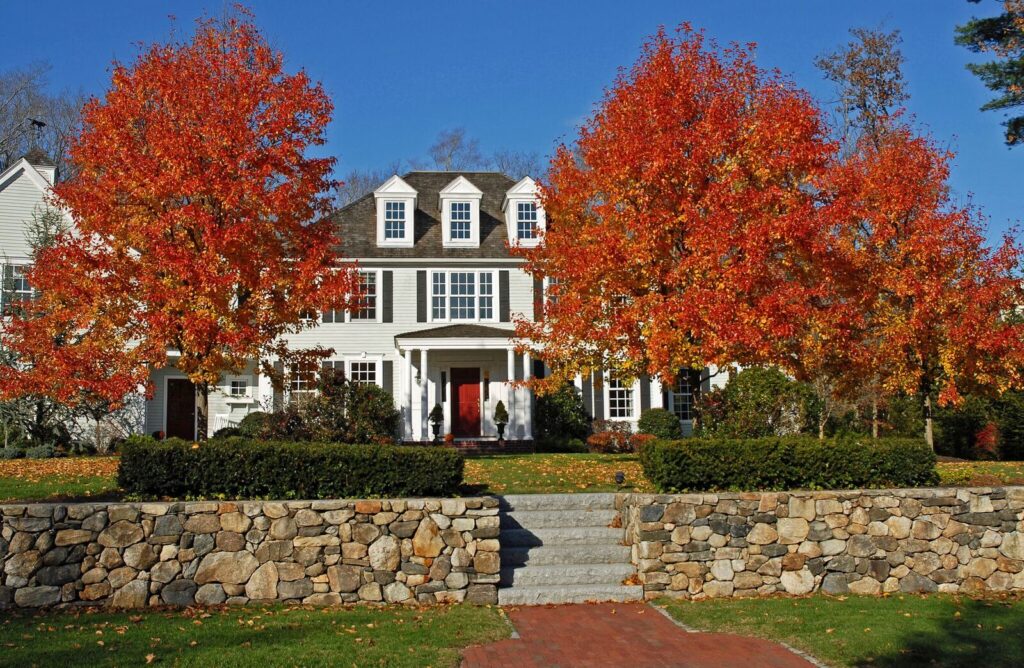
A natural stone wall will embellish the look of your property while harmoniously connecting your house design with nature. These structures can create charming raised flower beds, natural garden backdrops, boundary markers, driveway ramps, or purely serve as decoration.
Stone walls have been used for thousands of years. Farmers and primitive people first constructed them by piling loose field stones into a dry stone wall to make fields ready for planting. You may have encountered historic stone walls through the woods and fields of New England. These stone walls are one of the region’s most enduring reminders of the past. Yankee Magazine recently compiled a collection of images celebrating the beauty of New England stone walls.Stone walls can be freestanding or retaining. A freestanding stone wall is two sided – there is nothing pushing on it left or right. It can simply be a decorative wall that elevates the look of a property, or it can delineate a boundary between two properties. It also makes a beautiful natural garden backdrop. A retaining stone wall holds back an embankment and is constructed differently than a freestanding stone wall. As it is built upwards, the stones are tilted back toward the embankment to create pressure back towards the ground being retained. Perpendicular stones are tied from the wall into the embankment, which gives it more strength as it is constructed. Stone walls are constructed of wall stone, either regular or thin. Regular wall stone is thicker, bigger and blockier than thin wall stone, which is 1 to 3 inches thick. Granite, quartzite, and fieldstone are the most common choices of stone. Fieldstone is weathered and often has moss and lichen on the outside giving your newly constructed wall an aged appearance. Stone walls can either be dry stacked or mortared. A dry-stacked stone wall looks more natural than one that’s been mortared. The pressure of the stones interlocked together allow them to stand upright. A wall is usually mortared when it is very tall and not wide because it needs something to keep it all together. A skilled mason can even use mortar while giving the wall a dry stacked appearance. Although there are many concrete wall block products out there, the beauty and durability of natural stone should help make your decision on material an easy choice. Natural stone is virtually maintenance free and will even look better over time. When you are ready to add beauty and dimension to your yard with a stone wall, visit one of Swenson Granite Works seven store locations. We will show you our display area and the actual pallets of stone. Bring your plans and dimensions into the store so we can work with you to plan the project from start to finish.For now, take a look at these 8 freestanding and retaining stone walls to get your wheels turning and get you inspired.
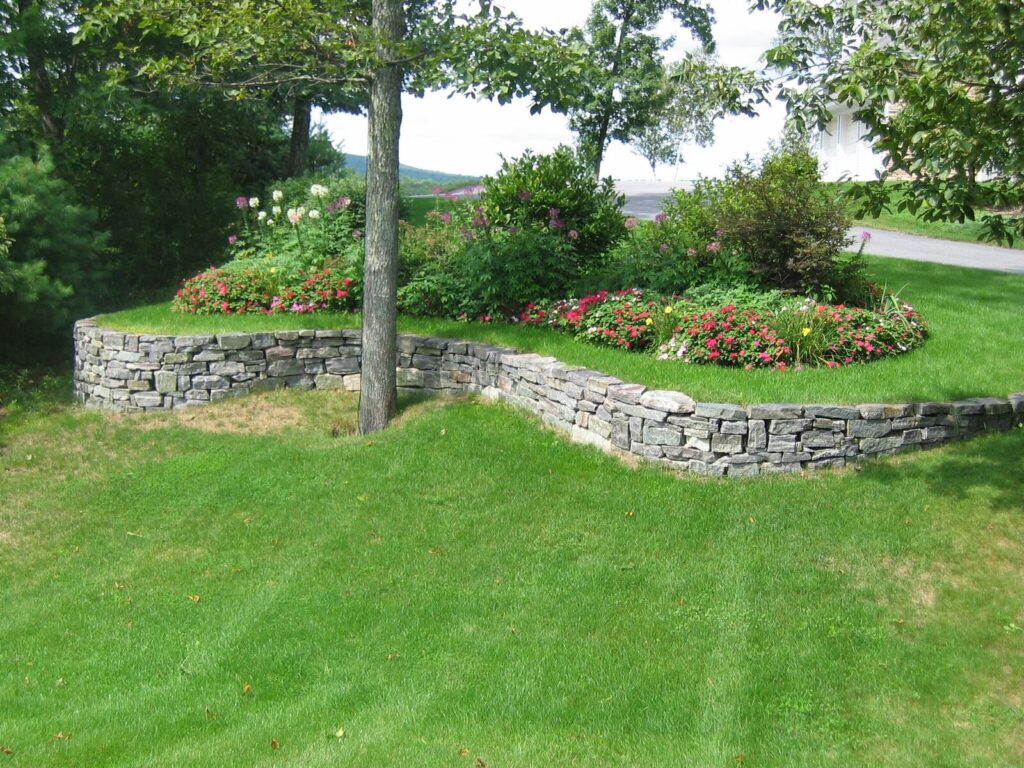
This undulating retaining wall constructed of Saratoga granite thin and regular wallstone creates a stylish planting area by raising up the ground behind it.
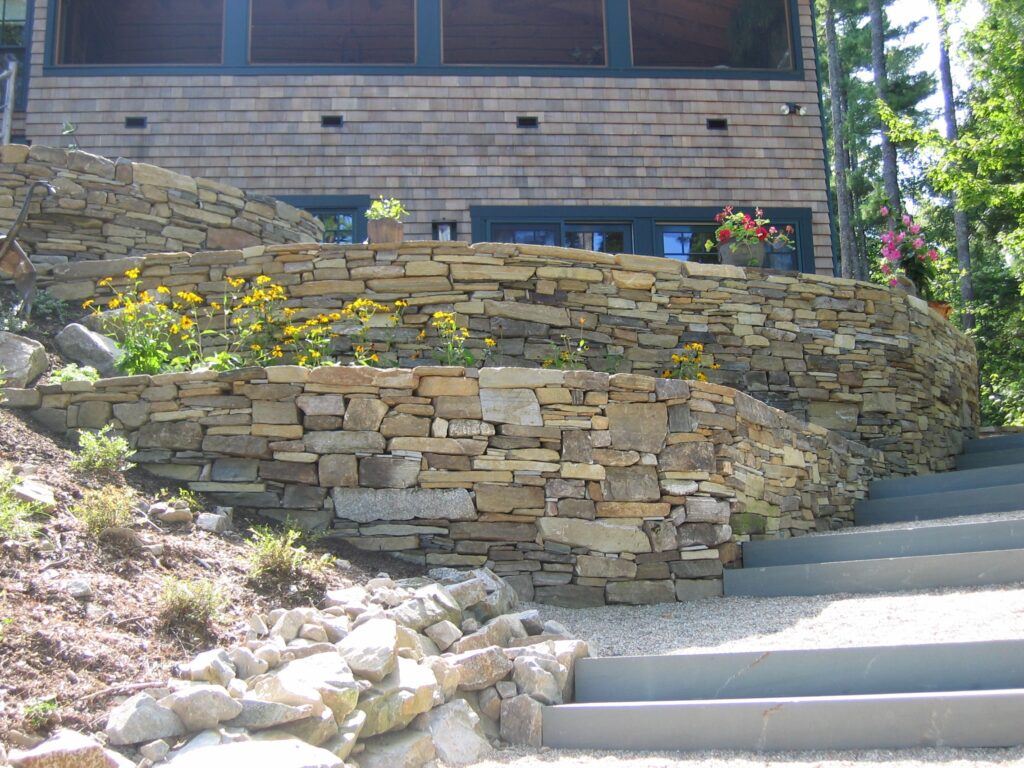
This terraced Weathered Mountain Stone retaining wall creates raised gardens up the steep embankment that give this yard a more aesthetic look.
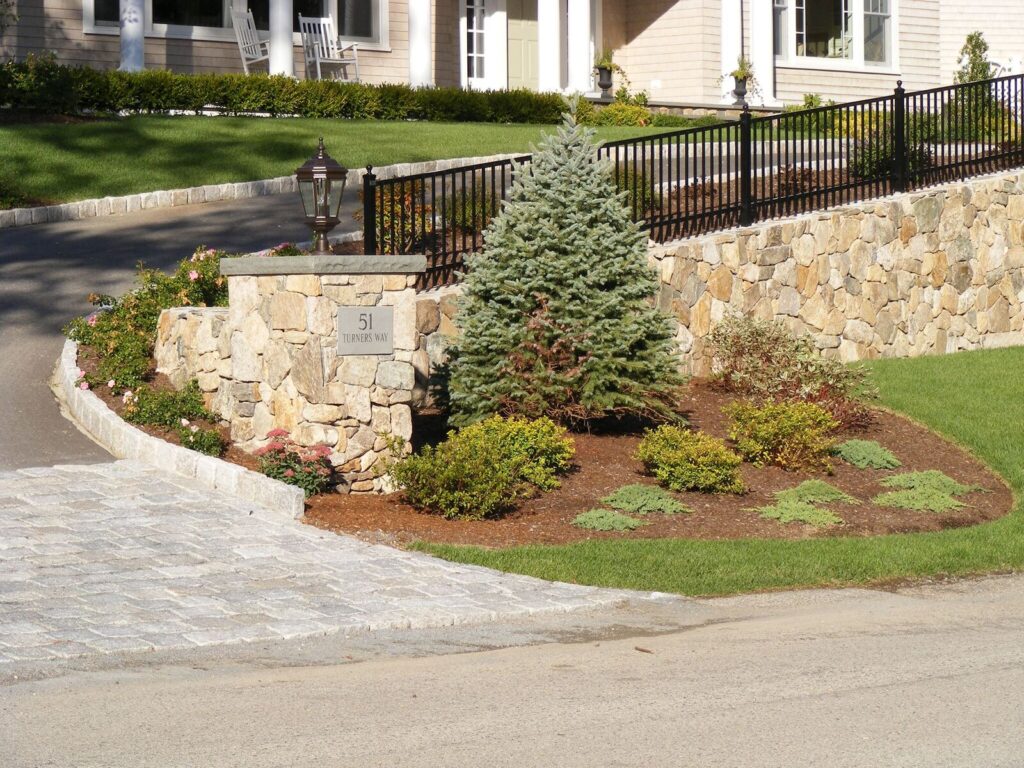
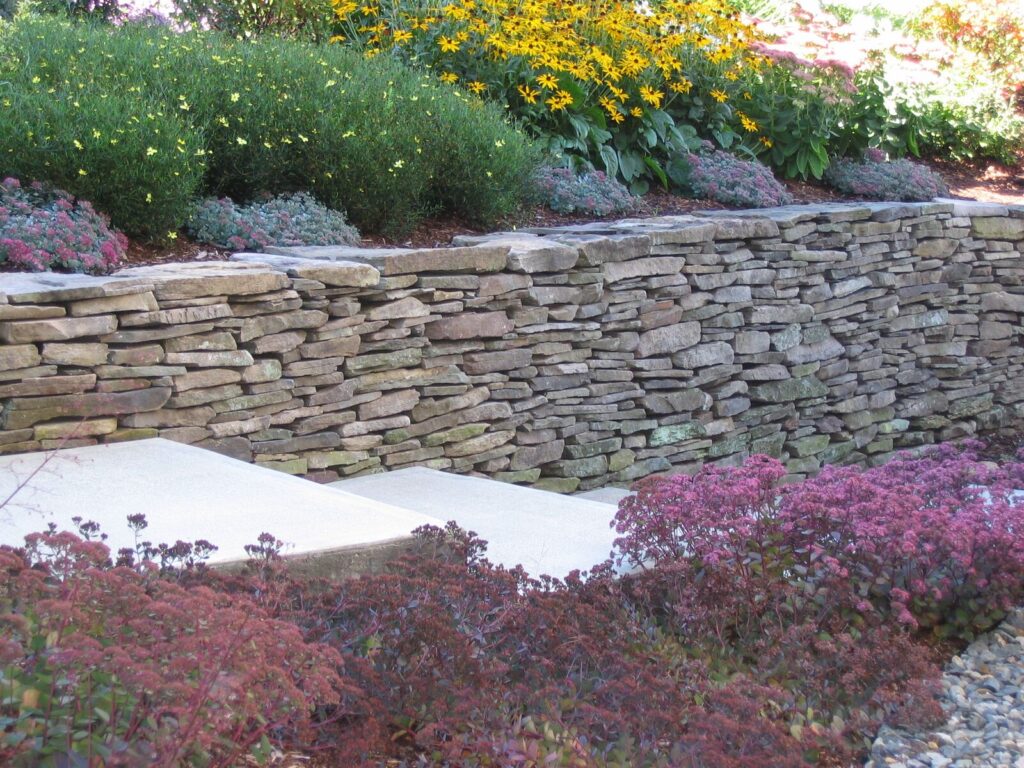
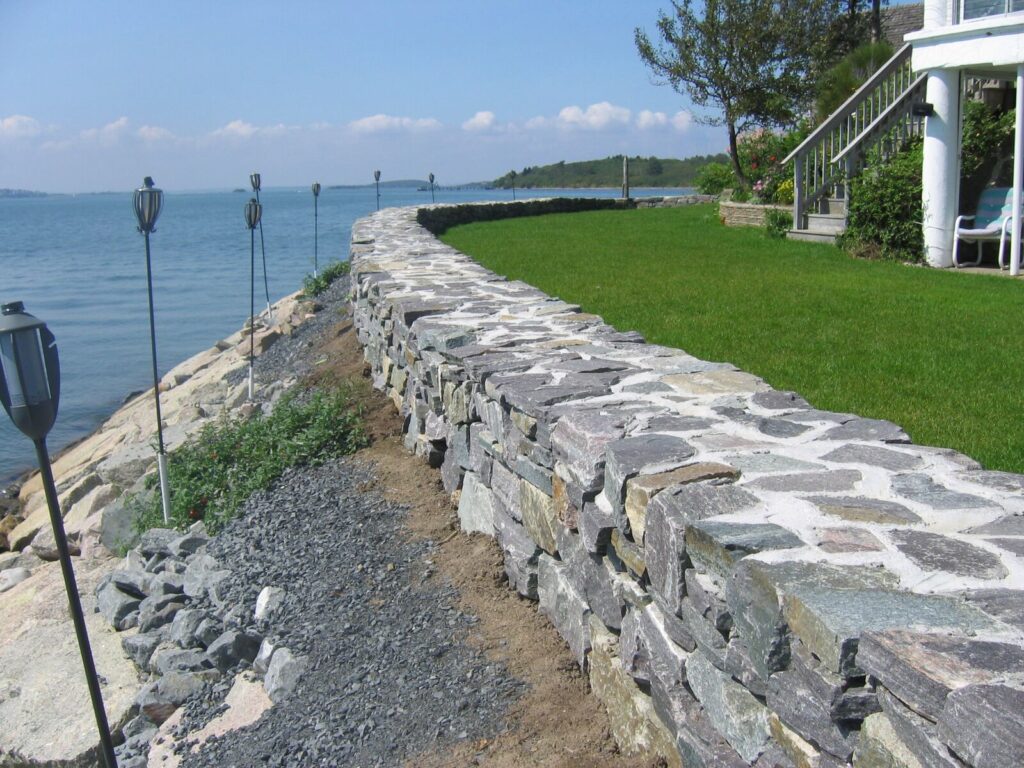
This retaining wall constructed fromSaratoga granite regular wallstoneblends in beautifully with the coastal setting. It serves as a decorative barrier between the lawn and the sea wall.
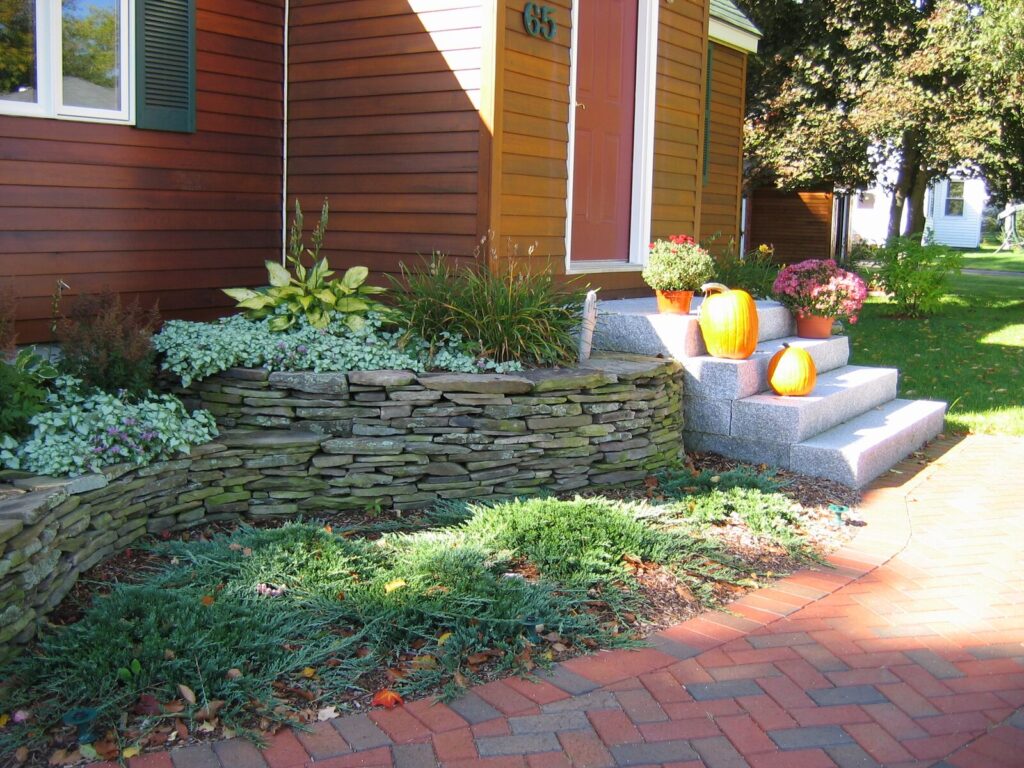
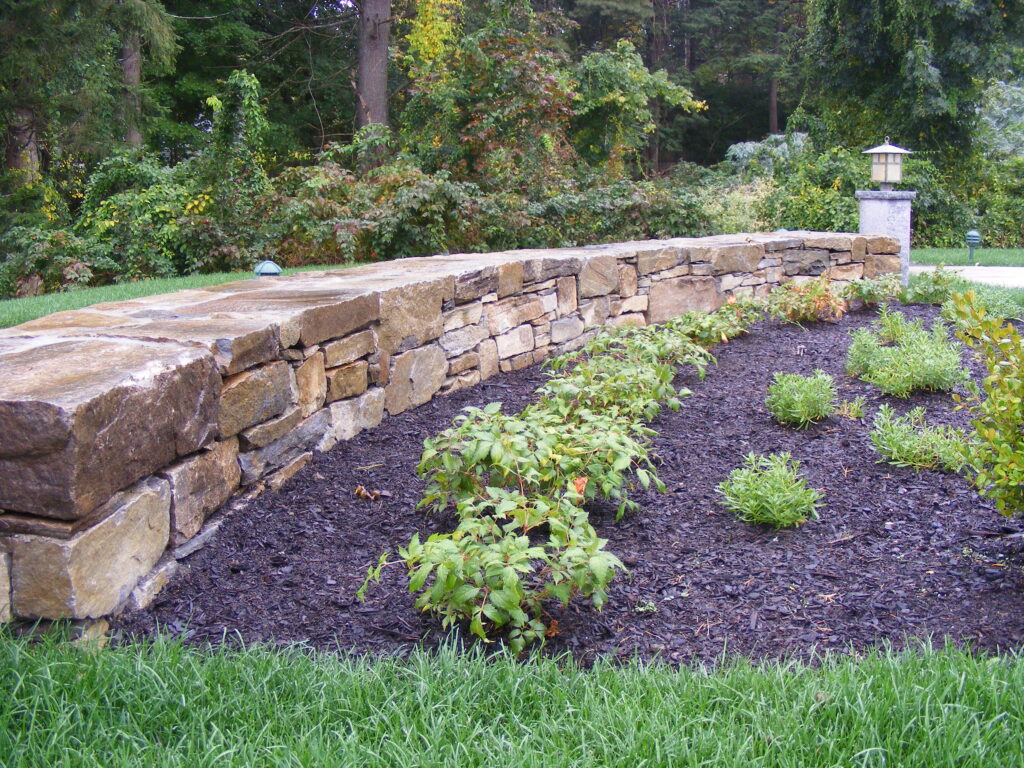
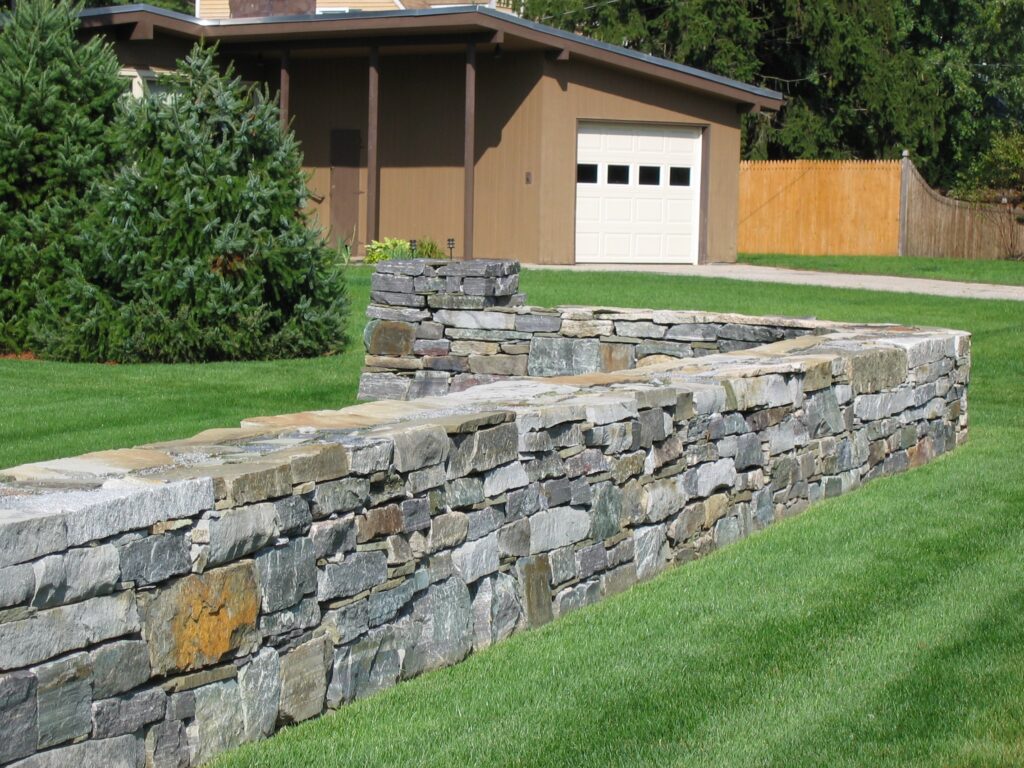
This freestanding wall constructed of Saratoga granite regular wallstone is both decorative and functional, serving as a boundary marker between the two properties.While contemplating your stone wall design, you may find ideas and inspiration on curbing and edging for your driveway, walkway or garden to be useful for a continuation of exterior home improvement. Download our Curbing & Edging Inspiration Guide.
